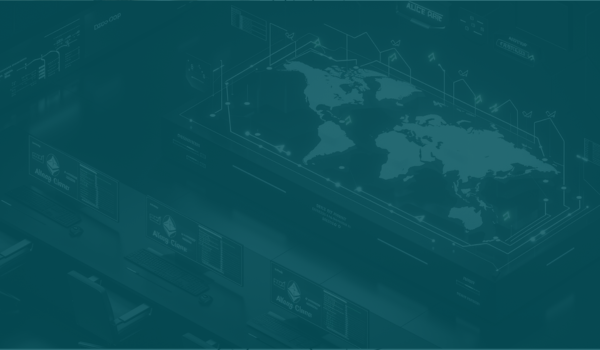When looking at taking the reach of your SaaS product global, there are a few main challenges that every organization must overcome for successful growth. These include ensuring your organization is compliant with regulations within each country that they’re operating, delivering optimal security across nations, maintaining scalability and providing high levels of performance.
To help set companies up for success, we’ve put together a six-part blog series covering these challenges (parts 1-4), as well as the different global architecture patterns that can help any company market and deliver their SaaS product to a global audience using AWS and AWS Organizations.
For our first topic, we’ll be tackling obstacles relating to compliance and frameworks that organizations should be considering when looking to expand. Let's dive in!
Compliance: The basics
There are a few tenets that every organization should follow to ensure compliance in new regions. Each country has different laws and regulations that your company will need to obey, so to meet the standards for a truly global product, you should be asking yourself these questions:
Who is accessing your product?
Who your users are — and where they’re located — could have serious implications for your data storage strategies. Every region that your company operates in will have different standards for different types of data, meaning your organization will need to be able to effectively track who is accessing your product and from where.
What data is being stored?
Each type of data your product stores may have different regulatory requirements for security and how it’s handled depending on country and vertical. Standards, such as Europe’s General Data Protection Regulation (GDPR), are very strict on how personal information is stored. Personal health information (PHI) may also be under strict handling regulations with the U.S. Health Insurance Portability and Accountability Act (HIPAA) being famously stringent.
Where are you storing your data?
Each individual country that you’re operating in may have different laws regarding data residency. For many countries, your organization must ensure all regulated data is both stored and processed locally. These regulations are common worldwide and must be considered strongly for the North America, ASEAN and EMEA regions.
Regulations that your organization should be following
While keeping up with data regulations globally may seem like a daunting task, what most countries are asking for is a baseline of security, privacy and management that is achievable by any company out there today. One way to ensure your organization meets the vast majority of data compliance records is to make certain you are abiding by the following important regulations. By doing so, your company should be 90% of the way to meeting data standards around the globe.
GDPR
This EU regulation is widely considered to be the gold standard of data protection laws. This law ensures that for any company to do business in the European Union they must follow strict obligations for handling data. This includes keeping comprehensive records and complying with the rights of individuals to access, transfer or ask for the deletion of their personal data. This, combined with security requirements — such as a mandatory reporting period of 72 hours for personal data breaches and a strict definition of what an individual’s consent over their data means — makes this one of the strictest data protection laws in existence today. If your organization is able to comply with GDPR, it should be able to quickly adjust to ensure compliance anywhere in the world.
ISO/IEC 27001
While not mandated by many countries outside of Japan and India, this ISO/IEC regulation is important to keep up with as it’s globally recognized as a strong set of standards that enforces the security and availability of your service. This framework can put potential worldwide customers at ease regarding any reliability and safety concerns.
While each country will have its own standards and obstacles that your company will face, aiming to meet these aforementioned standards will grant your organization the flexibility to make minor adjustments to meet them.
The best practices for ensuring regulatory compliance on a global scale
Once you’ve started to build out your business on a global scale, there are best practices that your organization should follow to ensure that you are maintaining compliance with all local laws. Adhering to these guidelines will help your company keep a strong mindset around compliance as you expand the reach of your product:
Appoint a Chief Compliance Officer (CCO)
It’s vitally important that your organization appoints a person whose sole responsibility is to make sure your company is following regulations across the world. A Chief Compliance Officer acts as a centralizing force to ensure your developers and teams are building your product with compliance in mind. A CCO will also create processes and procedures to give your company the assurance that it's following regulations.
Create a robust incident response plan
While no organization wants its data to be compromised, breaches are more and more common. In the case of a breach, your company needs to have written procedures in place and extensive training for each of its employees on what needs to be done. The best way to preserve your business’ reputation is to be able to quickly remediate and report the issue. Many countries also have minimum reporting time requirements that your company needs to follow. Having plans in place for the worst-case scenario can help save your organization from a hefty fine or other penalties.
Routinely audit and monitor your compliance status
Your organization should be consistently examining updates on regulatory compliance standards within every country in that it's operating. It’s also critical to continually be testing your systems for the possibility of a compliance breach with external auditors to ensure your organization is at the least possible risk of breach.
Ensuring compliance through architecture
While standards and practices for making sure your company can remain compliant with global regulations are all well and good, putting them into practice requires a strong architecture that can handle the variety of compliance challenges that you might encounter. AWS is the right choice for companies looking to implement a compliant architecture because it offers a range of tools and services designed specifically for building secure and compliant SaaS applications. Depending on your unique requirements, there are five key AWS architecture patterns for SaaS products that you should be aware of and consider in terms of compliance.
It may be tempting to try and build out the AWS architecture for your product yourself. However, a far more efficient and effective method is to work with a trusted partner who understands how to take a SaaS product from regional to global.
At base2Services, we’ve helped a wide range of SaaS companies rapidly scale their operations to turn them into SaaS powerhouses. We can help your organization get to the next level with a minimum of time investment from your IT team while also ensuring your data stays where it’s supposed to be and is well protected from threats. With our extensive knowledge of AWS, SaaS and our DevOps approach, we can help ensure your cloud environment brings high security, availability and global compliance.
There are many key challenges that every organization faces when trying to make a SaaS product globally available with AWS. Understanding these challenges and how to overcome them can be the difference between success and failure.
In our next post, part 2 of this series, I’ll cover the challenge of Security and help you understand the requirements and questions you need to think about.
If you want to find out more about how your SaaS company can succeed, please read our other insightful blog posts in this six-part series that take you through some key challenges as well as some useful key AWS architecture patterns to consider.
- 4 Key Challenges of Taking Your SaaS Product Global – Part 2: Security - NEXT
- 4 Key Challenges of taking your SaaS product global – Part 3: Scaling
- 4 Key Challenges of taking your SaaS product global – Part 4: Performance
- Globalize your SaaS product with 5 AWS architectural patterns
- Utilizing AWS Organizations for your multi-account SaaS architecture
And, if you haven't already, be sure to watch the videos of our webinar on this topic.
Ready to take your SaaS product to the next level? Contact us today to learn more about how base2Services can help you succeed on a global scale.





